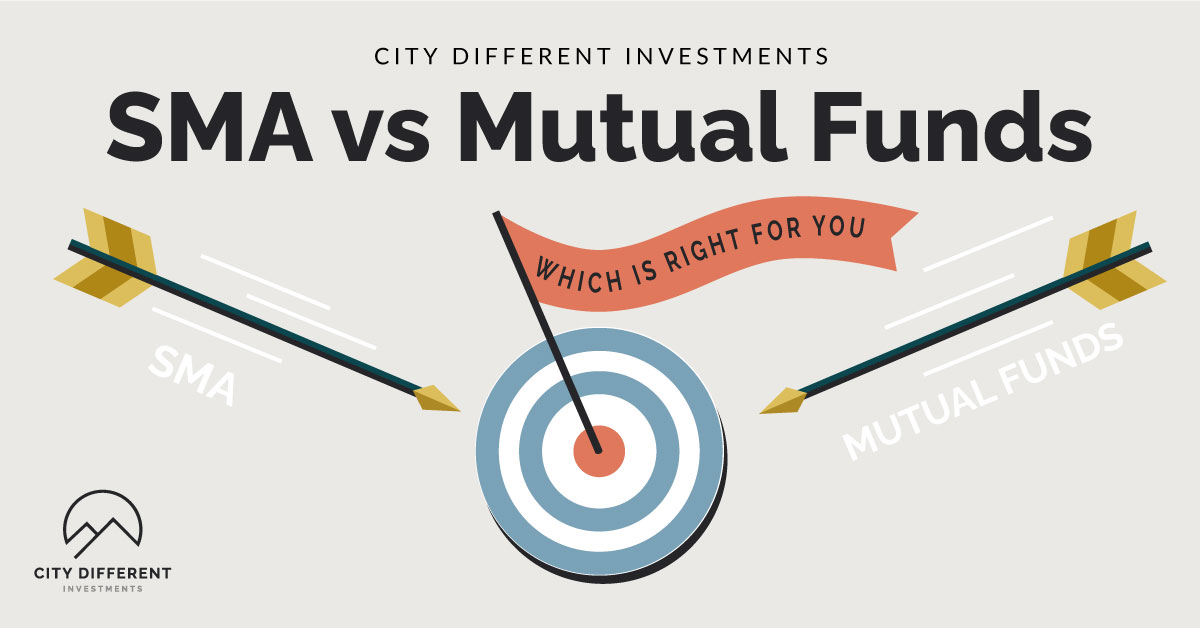Which is right for you?
By now, basically everyone knows what mutual funds are. A huge percentage of our nation’s retirement investments are wrapped up in mutual funds because they offer some distinct advantages — mutual funds often have low fees associated with owning shares of them, they generally provide portfolio diversification across sectors and industries, and they typically have low minimum purchase thresholds. But do you really know everything you ought to know about what your investment dollars are doing when you invest in a mutual fund? Or whether you might be able to generate more favorable returns elsewhere?
That’s why City Different Investments put together a comparison summary (and video) laying out the relevant differences (plus advantages and disadvantages) of Separately Managed Accounts (SMAs) vs. Mutual Funds.
If you’d like to receive the summary, click the button below to learn more about the pluses and minuses of SMAs and mutual funds:
IMPORTANT DISCLOSURES
This information has been prepared for educational purposes only and does not constitute financial, investment, tax, or legal advice. These materials reflect the opinion of City Different Investments on the date of publication or use and are subject to change at any time without notice due to various factors, including changing market conditions or tax laws. All investments are subject to varying degrees of risk, and there can be no assurance that the future performance of any specific investment, investment strategy or product referenced directly or indirectly herein will be profitable, perform equally to any corresponding indicated historical performance level(s), or be suitable for an investor’s portfolio. Past performance is not an indicator of future results. There are additional differences between separate accounts and mutual funds that have not been outlined herein. A mutual fund’s prospectus includes investment objectives, risks, fees, expenses, and other information that should be read and considered carefully before investing.



